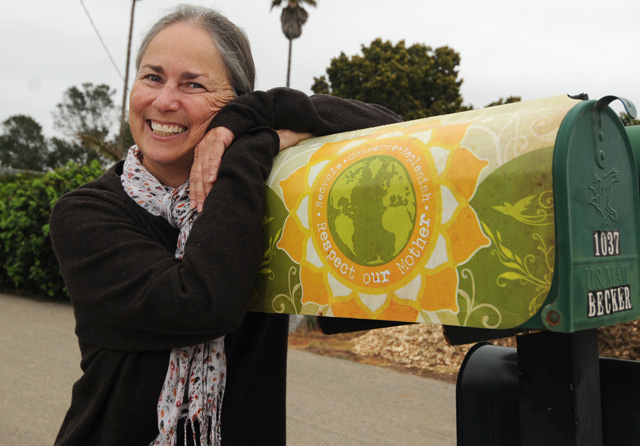PG&E Pulling Plug on Diablo Canyon
Nuclear Generators Shutting Down by End of 2025

San Luis Obispo resident Rochelle Becker has been lobbying, fighting, and suing to shut down the Diablo Canyon nuclear power plant in Avila Beach since her daughter Sierra was 8 years old, first with the organization Mothers for Peace and more recently with Alliance for Nuclear Responsibility. Last week, Becker’s daughter graduated from college; this Tuesday her granddaughter graduated from high school. On that same day, the Pacific Gas & Electric Company (PG&E) unveiled plans to gradually pull the plug on Diablo Canyon — the last nuclear power plant in California — and replace the energy produced by the twin power generators built 30 years ago with renewable energy.
Specifically, PG&E pledged to allow its license with the Nuclear Regulatory Commission (NRC) to expire in 2024 and 2025 and not seek the extension it began pursuing six years ago. At a telephonic press conference held Tuesday morning, a host of environmental activists, including Becker, the union representing many of Diablo Canyon’s nearly 1,500 workers, and PG&E CEO Tony Earley hailed the negotiated deal as nothing less than “historic.” Some called it a “template” for shutting down the 60 other nuclear power plants throughout the United States. But during an interview before the press conference, Becker admitted she wasn’t quite sure how she felt. “I have to let it hit me first,” she said.
The announcement came just one week before the California State Lands Commission was slated to review a permit extension request for the plant’s environmentally controversial water-discharge system, in which PG&E dumps water heated in the plant’s cooling process — necessary to prevent the radioactive core from melting down — directly into the ocean environment. Critics such as Becker have denounced this practice as thermal pollution and vowed to fight the permit.
Were they to have prevailed at State Lands next week, Diablo Canyon’s state permits would have expired in just two years, not nine. But given how PG&E has been hopscotching such regulatory hurdles for decades, it’s hard to imagine that outcome. What really drove the deal, stated Earley, was a new economic calculus brought on by state climate-change legislation requiring that 50 percent of all California electricity originate from renewable sources by the year 2030 (PG&E is pledging to hit 55 percent by 2031 In addition, he said, increased energy efficiencies have reduced California’s overall demand for juice.
In this scenario, Diablo Canyon’s contribution to the grid will be downgraded from primary to only ancillary. But the plant will cost about the same to operate, no matter how reduced the output. Economically, Earley said, it makes no sense to operate nuclear power plants on an on-again, off-again basis. Because of the new renewable requirements, he estimated the cost to produce a kilowatt of nuclear power effectively doubled. Wind, solar, improved energy efficiencies, and energy storage systems, he said, will be cheaper. “It will cost less overall,” he said.
After 45 years of almost nonstop environmental opposition, it’s hard to know what prompted PG&E’s come-to-Jesus revelation. “We all came to the conclusion there has to be a better way,” Earley said. But according to Damon Moglen of Friends of the Earth, an environmental organization that emerged decades ago over a split within the Sierra Club over Diablo Canyon, it was the “Plan B” document they prepared “conclusively showing” it was significantly cheaper to produce electricity renewably rather than with nuclear power. Over time, Friends of the Earth contends, the renewable path will be $1 billion cheaper. Earley said the company won’t have to increase rates to make the switch. Currently, the company derives about 30 percent of its power from renewable sources. To the extent getting to 55 percent proves a challenge, he noted several times, the company has 15 years to get there.
Friends of the Earth — like the Alliance for Nuclear Responsibility — has filed multiple legal documents challenging the seismic safety of the plant in the wake of relatively recent discoveries of offshore earthquake faults significantly closer to the plant than previously understood. Their cause was buttressed when the NRC’s former resident inspector at Diablo Canyon, Michael Peck, went public with concerns that the plant was not licensed to withstand the magnitude and intensity of shaking that the network of these “new” and closer faults could inflict. (Peck’s concerns were chalked up to a difference of professional opinions among experts by both the NRC and PG&E ; both insisted the plant could withstand anything the faults could dish out.) Had PG&E chosen to extend the life span of the plant for another 20 years, the company would have had to endure such controversies many times over.
As part of the deal, PG&E will spend roughly $350 million to retrain or retain as much of the highly skilled and well-paid workforce now at Diablo Canyon. In addition, it agreed to keep paying the County of San Luis Obispo the same amount in property taxes — about $22 million a year — for the next nine years even though the plant value will depreciate considerably in that time. That’s about $50 million more than it otherwise would have to. About half that will go to San Luis Obispo public schools, for which the Diablo Canyon tax base constitutes roughly one-third their total revenues stream.
In the meantime, nothing in the deal precludes Becker from testifying against PG&E when its Diablo Canyon water-diversion permit goes before the State Lands Commission next week. The deal only prevents Becker from filing a lawsuit to block the permit should the State Lands Commission grant one. “We found we got pretty much everything we asked for,” Becker said, “without having to give up anything.”



